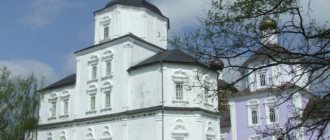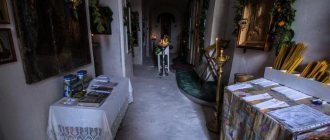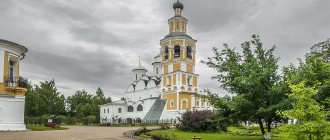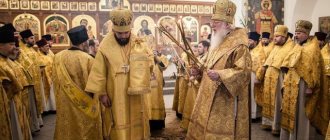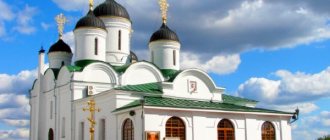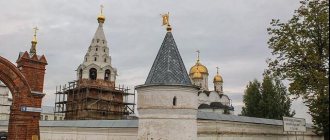Mir
Russia Tver region village Nikolo-Malitsa Nikolo-Malitsky monastery Map loading in progress...
{"format":"leaflet","minzoom":false,"maxzoom":false,"limit":50,"offset":0,"link":"all","sort":[""], "order":[],"headers":"show","mainlabel":"","intro":"","outro":"","searchlabel":"\u2026 \u0441\u043b\u0435\ u0434\u0443\u044e\u0449\u0438\u0435 \u0440\u0435\u0437\u0443\u043b\u044c\u0442\u0430\u0442\u044b","default":"","import-annotation":false,"width ":"auto","height":"350px","centre":{"text":"","title":"""link":"""lat":56.87416600000000244108377955853939056396484375,"lon": 35.79918599999999884175849729217588901519775390625,"icon":""},"title":"","label":"","icon":"","lines":[],"polygons":[],"circles":[ ],"rectangles":[],"copycoords":false,"static":false,"zoom":8,"defzoom":14,"layers":["OpenStreetMap"],"image layers":[] ,"overlays":[],"resizable":false,"fullscreen":true,"scrollwheelzoom":true,"cluster":false,"clustermaxzoom":9,"clusterzoomonclick":true,"clustermaxradius":80, "clusterspiderfy":true,"geojson":"","clicktarget":"","showtitle":true,"hidenamespace":false,"template":"","userparam":"","activeicon": "","pagelabel":false,"ajaxcoordproperty":"","ajaxquery":"","locations":[{"text":"\u003Cb\u003E\u003Ca href=\"/palomnik/%D0% 9D%D0%B8%D0%BA%D0%BE%D0%BB%D0%BE-%D0%9C%D0%B0%D0%BB%D0%B8%D1%86%D0%BA%D0%B8 %D0%B9_%D0%BC%D1%83%D0%B6%D1%81%D0%BA%D0%BE%D0%B9_%D0%BC%D0%BE%D0%BD%D0%B0%D1 %81%D1%82%D1%8B%D1%80%D1%8C\" title=\"\u041d\u0438\u043a\u043e\u043b\u043e-\u041c\u0430\u043b\u0438\u0446\u043a\ u0438\u0439 \u043c\u0443\u0436\u0441\u043a\u043e\u0439 \u043c\u043e\u043d\u0430\u0441\u0442\u044b\u0440\u044c\"\u003E\u041d\ u0438\u043a\u043e\u043b\ u043e-\u041c\u0430\u043b\u0438\u0446\u043a\u0438\u0439 \u043c\u0443\u0436\u0441\u043a\u043e\u0439 \u043c\u043e\u043d\u0430\u 0441\u0442\u044b\u0440\u044c \u003C/a\u003E\u003C/b\u003E","title":"\u041d\u0438\u043a\u043e\u043b\u043e-\u041c\u0430\u043b\u0438\u0446\u043a\u0438\u0439 \u0 43c \u0443\u0436\u0441\u043a\u043e\u0439 \u043c\u043e\u043d\u0430\u0441\u0442\u044b\u0440\u044c","link":"","lat":56.874166000000002441 08377955853939056396484375,"lon":35.79918599999999884175849729217588901519775390625 ,"icon":""}],,"imageLayers":[]}
56.875035; 35.79534
Russia, Tver region, Kalininsky district, Zavolzhskoe rural settlement, Nikolo-Malitsa village
Nikolo-Malitsa village, Tver region
Russia
Telephone:
8-915-728-95-31 (economy)
Telephone:
8-980-635-07-58 (from 10.30 to 12.30)
Email:
Nikolaevsky Malitsky Monastery (colloquial Nikolo-Malitsky Monastery, Nikolo-Malitsa) is an Orthodox monastery in the Tver region.
History[edit]
Architects
:
- 1751-1760: Plyuskov P. Ya. - construction according to his own design
- 1829: Lvov I. F. (monastery buildings)
- 1839: Lvov I. F. (monastery buildings)
Web
: https://nikola-malica.ru/
The monastery was founded between 1584-1598. on the Shevyakov wasteland. The monastery was named after the Malitsa river. At first the monastery was very poor. After the Time of Troubles, through the prayers and labors of a small brethren, life on Malitsa gradually began to get better. People flocked here, and a settlement arose nearby.
In 1675, the entire monastery burned down due to a strong fire. Among the ashes and sand, an icon of St. Nicholas the Wonderworker was discovered, which miraculously survived such a strong fire. In 1676, with donations from a Tver nobleman, steward Grigory Dmitrievich Ovtsyn, instead of a burnt wooden church, a five-domed stone church in the name of the All-Merciful Savior with two warm chapels was built: St. Nicholas and the icon of the Most Holy Theotokos Hodegetria. The fraternal cells and services in the monastery were restored. In the second half of the 18th century. Major stone construction began in the monastery.
In 1751-1760, at the expense of Countess M. G. Shuvalova, the monastery was almost completely rebuilt; the construction work was supervised by architect. P. Ya. Pluskov.
In 1829, according to the design of I. F. Lvov, the fraternal building was rebuilt.
All this splendor after the revolutionary storms of the twentieth century. turned out to be lost. In the 1920s The new authorities raised the question of closing the monastery, and its plunder and slow destruction began. The fate of the majority of the brethren is unknown today.
In the battles of October-December 1941, the monastery was almost completely destroyed. After the war, peaceful life began to improve, but there was no longer room for monastic prayer in it. When the restoration of housing began, bricks from the monastery buildings began to be used: this is how the monastery perished. All monastic burials were also wiped off the face of the earth.
In 2005, with the blessing of the Archbishop of Tver and Kashinsky Victor, restoration work began. To date, the fraternal building, the house church have been restored, the territory has been landscaped, the Intercession Church, a bell tower, utility rooms, a refectory, etc. have been built. Divine services according to the monastic rite are held regularly.
Since 2008, monastic life has been resumed.
Founding history
The history of the Nikolo-Malitsky Monastery began in the period 1584–1595. It was founded on Shevyakova Heath during the reign of Tsar Fyodor Ivanovich. The monastery got its name from the Malitsa River, which flowed in the vicinity.
At first it was a poor monastery, surrounded by a pine forest. Gradually, through the efforts of a small brethren, the monastery developed and acquired land holdings. Soon the Malitskaya Sloboda was formed near the monastery.
The proximity of the monastery to the Moscow-Novgorod road attracted merchants passing by. They came here to pray to St. Nicholas the Wonderworker, who patronized trade matters, and often made valuable deposits.
Current state[edit]
By the decision of the Holy Synod of June 23, 2008, the monastery in the village of Nikolo-Malitsa, Kalinin region, was recreated, and Hieromonk Boris (Tulupov) was appointed vicar of the monastery.
Currently, the monastery complex is under construction. Its architecture is designed in the Greek style, which can be seen in the patterns created by a combination of light yellow and brown bricks in the cladding of the walls of the buildings, in their configuration. The monastery plans to build a hotel for pilgrims.
Services are held in the Intercession Church. The monastery lives according to the strict Athos charter, unlike monasteries operating in accordance with Russian tradition, with the only deviation - women are allowed to come here. Services here are conducted according to the Svyatogorsk rite, which has its origins in ancient Byzantine church traditions. They are characterized by melodic Greek chants, very different from Russian ones with bright intonation colors. The monks' prayer service usually begins at five o'clock in the morning. The monastery has a lecture hall and Christian Sunday schools for children and adults.
Soviet years
After the October Revolution, all the splendor of the monastery was destroyed and lost forever. The cathedral church and other buildings were selected. The exact date of closure of the monastery is unknown. Archival sources contain information that the Church of the Intercession continued to work intermittently until 1929-1933.
During the Great Patriotic War, the front line passed here and there were continuous battles. The main part of the architectural ensemble of the monastery was destroyed by enemy bombing.
After the victory over the fascist invaders, the Soviet authorities were not able to allocate funds for the restoration of the monastery. Residents of the surrounding villages began to use everything that could be broken from the surviving buildings of the monastery - boards, window frames, doors - to improve their homes.
Along with the monastery, the church cemetery was also destroyed. Only a few graves in the old burial grounds have survived. From the former majestic monastery, only the fraternal building remains. For some time it served as a dormitory for collective farmers, but in 1980 it was abandoned and looted.
Shrines[edit]
The shrines of the monastery are the icon of St. Nicholas the Pleasant, which survived the fire of 1675 (found among the ashes, partially burned, with its face preserved), revered as miraculous, as well as a particle of the relics of St. Arseny of Tver. The relics of the saint are very significant for the brethren and parishioners of the Malitsky monastery, since Saint Arseny is not only the patron saint of the city of Tver, but also the special patron of all monastics on the Tver land. The saint founded many monasteries around Tver. In addition, the saint founded the Zheltikov Monastery on the Tmaka River near Tver.
Updated monastery
After the renovation, the territory of the Nikolo-Maletsky Monastery (Tver) acquired the shape of a quadrangle, surrounded by a stone wall and a tower at each corner. Initially, the towers were crowned with high wooden domes, but by the end of the 19th century, all the buildings of the monastery were covered with iron.
In the center was the Spassky Church, rebuilt in the shape of a Greek cross. To the east of it there was a building for the brethren. In the southern part there were chambers for the abbot. A two-tier bell towered above the Holy Gates, and on the sides were the Intercession and Athos churches.
By the middle of the 18th century, the monastery took on the appearance of a single architectural ensemble, made in the Baroque style. The favorable geographical location, many revered shrines and observance of ancient traditions served as the reason that believers flocked here not only from neighboring villages, but also from Tver itself.
At the beginning of the 20th century, the Nikolo-Malitsky Monastery developed and prospered. The buildings that belonged to the monastery were even located outside its territory. To the north of the monastery there was a stone chapel with an iconostasis made of ancient icons. Another chapel was erected near the road to St. Petersburg.
At the monastery there was a parochial school and college. In 1880, the brethren of the monastery built country houses, which were rented out to residents of Tver. The community was also actively engaged in economic activities. She owned her own mill and more than five hundred acres of forest and arable land.
Abbots
- Joel (mentioned 1673 - February 1695), abbot.
- Jonah (mentioned December 10, 1679) [2]
- Vissarion (1768 - January 1769), i.d., Hierom.
- Arseny (October 10, 1811 - March 4, 1812), acting, hieromonk, treasurer
- Konstantin (March 1827 - February 1, 1828), archimandrite of the Zheltikov Monastery (v.u.)
- Vladimir (1897 - 1902) [10] i/d, hierome, treasurer
Address and schedule of the Nikolo-Malitsky Monastery
The revived monastery becomes a real spiritual center of the Tver diocese. The order chosen by the brethren is as close as possible in Russia to the regulations of the Athos monasteries.
The schedule of services of the Nikolo-Malitsky Monastery includes a full daily cycle of all the required services, according to the rite approved by the Church: from 6 o’clock in the morning the Midnight Office, Matins and Liturgy are performed in succession, and from 17 o’clock – Vespers and Compline. Before the holidays, night vigils are held, which take place from 10 pm to 4 am.
The main part of the services takes place in the large Church of the Intercession. No electric lighting is used - all services are performed by candlelight. According to the monastery charter, the number of lit candles corresponds to the type of service. The more solemn the holiday, the more candles are lit on the chandeliers.
In the service of the Nikolo-Malitsky Monastery, so much is borrowed from Greek that for a Russian Orthodox it sometimes seems strange and not entirely understandable. But it is enough to stand for a short time, immersed in prayer, and everything around you becomes natural and familiar.
Address of the Nikolo-Malitsa Monastery in Tver: Nikola-Malitsa village, st. Shkolnaya, 17.
Renaissance
The first attempts to revive the monastery were made in May 1994, when a worship cross was installed near the walls of the destroyed monastery complex and a prayer service was served.
The major restoration of the Nikolo-Malitsky Monastery began in 2005. Unfortunately, it was not possible to reconstruct the monastery in its original form. The architectural ensemble of the monastery, at the time of its liquidation, consisted of various elements that had developed over two centuries. In addition, no reliable description and measurements of the destroyed buildings have been preserved.
Therefore, the churches located in monasteries on Mount Athos served as models for monastery churches. Thus, the Intercession Cathedral of the Nikolo-Malitsky monastery was made in the likeness of the Vatopedi temple of the Private Belt.
Today the monastery lives its full life. The restoration of the architectural complex is in its final stage. The duration and severity of monastic services not only does not scare away believers, but, on the contrary, attracts more and more parishioners here, as in the old days.
The monastery's special pride is its church choir. All chants are conducted in Greek according to ancient neumas. Byzantine chants differ from partes singing in their asceticism and require lengthy preparation.
